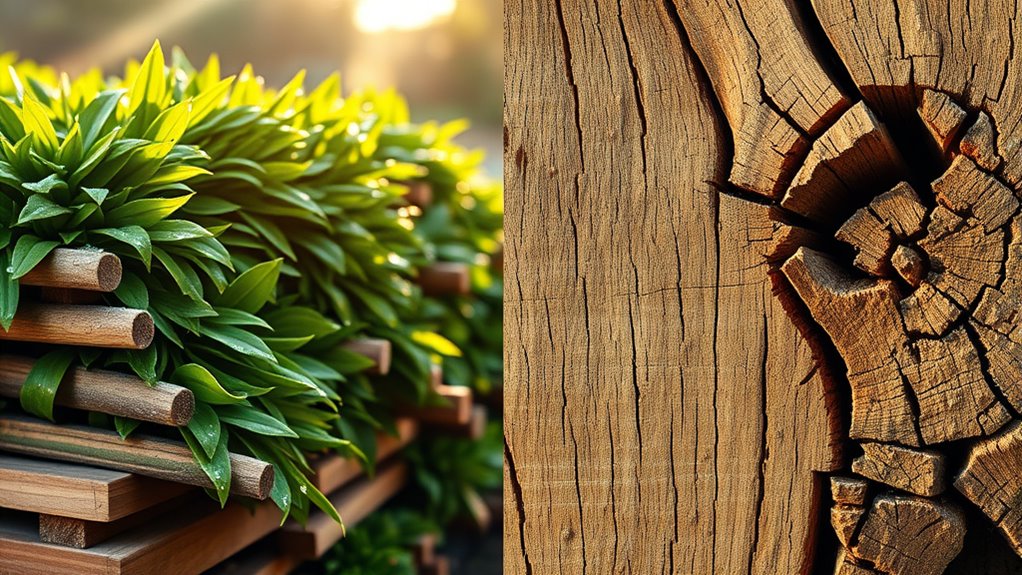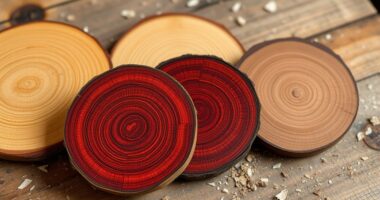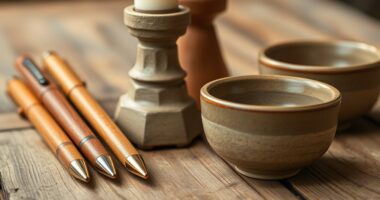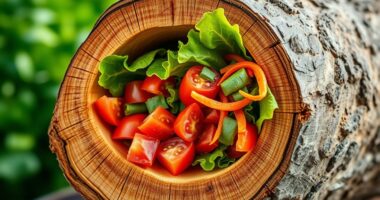In green turning, you work with wood that has high moisture content, making it more flexible but prone to warping and distortion as it dries. This can result in uneven shapes and rougher finishes, requiring extra work later. Dry turning offers more stability, producing smoother, more precise surfaces without much movement. However, it’s harder and can chip more easily. Understanding these differences helps you choose the best approach for your project—if you want to learn more, keep exploring this topic.
Key Takeaways
- Green turning involves high moisture content, increasing warping and bending as the wood dries.
- Dry turning occurs at low moisture levels, reducing warping but increasing the risk of cracking.
- Warping in green turning can cause dimensional inaccuracies, requiring additional finishing or reshaping.
- Dry turning provides more stable dimensions but may produce rougher surfaces initially.
- Proper moisture management and timing impact final shape stability and surface quality after turning.
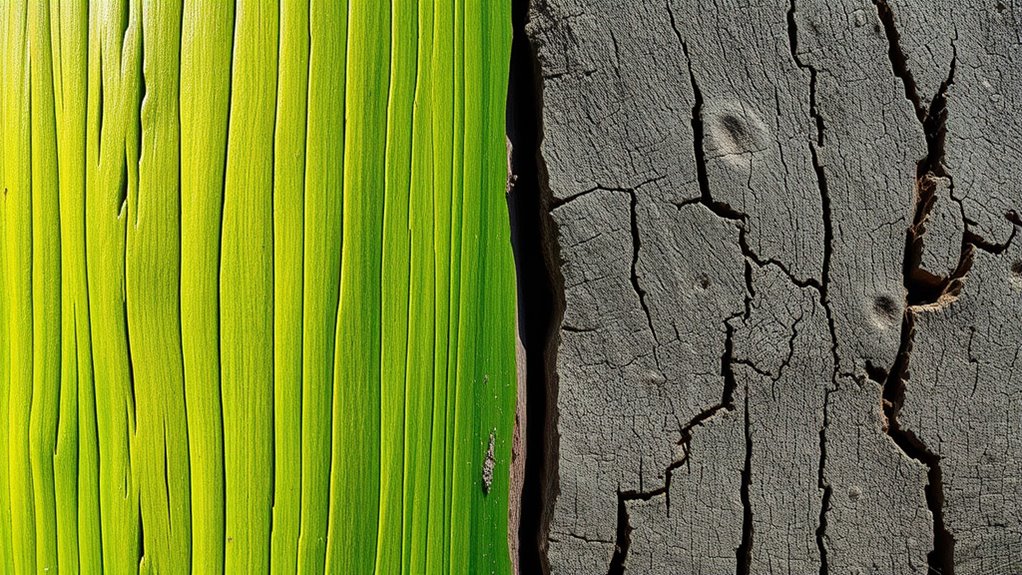
Have you ever wondered whether green turning or dry turning offers better results? When it comes to machining wood, moisture content plays a vital role in the process. Green wood, which has a high moisture level, tends to behave differently than dry wood, affecting both the surface finish and the ease of machining. If you’re aiming for a smooth, polished surface, understanding how moisture impacts your technique can make all the difference. Green turning involves working with wood that still contains a significant amount of water, often around 30% to 60% moisture content. This high moisture level makes the wood more pliable and less prone to cracking during cutting. However, it also introduces unique challenges, such as increased warping and a rougher surface finish. The uneven moisture distribution within green wood can cause the material to warp or bend as it dries, which can distort the final shape and compromise precision. Additionally, because green wood is softer and more fibrous, the surface finish may appear rougher and less refined, requiring extra sanding or finishing after turning. moisture content significantly influences how the wood responds during machining, affecting both the process and the final product.
In contrast, dry turning involves working with wood that has been dried to a lower moisture content, typically below 12%. This reduces the wood’s tendency to warp or crack during machining, resulting in a more stable and predictable process. Dry wood generally produces a cleaner, smoother surface finish right out of the lathe, often requiring less post-machining smoothing. The lower moisture content means the material is less prone to movement during cutting, allowing you to achieve finer details and sharper edges more easily. However, working with dry wood can be more challenging because it tends to be harder and more brittle, increasing the risk of chipping or tearing if you’re not careful with your tool sharpness and cutting speed. Also, the surface finish, while generally smoother, might reveal more tool marks if the cutting parameters aren’t properly adjusted.
Choosing between green and dry turning ultimately depends on your project’s priority—whether you value faster processing with less finishing work or prefer a more stable, polished surface. Green turning can be advantageous for rough shaping and large components, but it demands patience as the wood dries and warping occurs. Dry turning, while sometimes more demanding in terms of tool maintenance and control, offers a more consistent surface finish and dimensional stability. Knowing how moisture content influences these factors will help you decide which method suits your needs best, ensuring a better overall outcome for your woodworking projects.
Frequently Asked Questions
How Does Humidity Affect Green Turning Outcomes?
Humidity impact considerably influences green turning outcomes, as high humidity levels increase moisture content in the wood. You need to focus on moisture control to prevent warping and cracking during machining. When humidity is low, the wood dries faster, making it easier to achieve precise cuts. Conversely, high humidity can cause swelling and distortion, so maintaining consistent humidity helps you produce stable, high-quality finished pieces.
What Are the Best Drying Techniques Post-Green Turning?
You find that proper drying techniques are vital for quality, as moisture control prevents warping. Start with air drying in a well-ventilated space, then consider kiln drying for faster results. Using dehumidifiers or moisture meters helps monitor progress, ensuring even drying. Embrace patience, because rushing can cause cracks or distortions. Your awareness of effective drying methods ultimately safeguards your work, revealing craftsmanship built on careful moisture management.
Can Green Turning Prevent Warping Better Than Dry Turning?
Green turning can better prevent warping than dry turning because it retains moisture, helping the wood stay stable during shaping. By working with green wood, you reduce internal stresses that cause warping later. This moisture retention allows for more controlled drying and minimizes shape distortion. So, if warping prevention is your goal, green turning offers advantages by maintaining the wood’s natural moisture and reducing internal stresses.
What Tools Are Ideal for Dry Versus Green Turning?
A tool for every job, and the right tool makes all the difference. For dry turning, you want high-speed steel or carbide tools with sharp edges to handle lower moisture levels and maintain precision. Green turning requires tools that can manage moisture control, like coated or carbide options, to prevent warping. Your choice of tool depends on your material’s moisture content and your goal of achieving smooth, accurate cuts.
How Do Temperature Variations Influence Drying and Warping?
Temperature variations cause moisture migration within the wood, leading to uneven drying and potential warping. As temperatures fluctuate, thermal expansion occurs, stressing the material and increasing the risk of deformation. You should control temperature changes carefully to minimize these effects, ensuring consistent heat to promote even moisture loss. By managing temperature, you help prevent warping and achieve more stable drying, resulting in a better-quality finished piece.
Conclusion
So, next time you choose between green and dry turning, remember that your warping and drying challenges might just be your biggest surprises. Ironically, what seems like a simple decision can lead to unexpected headaches down the line. Whether you prefer green or dry, keep in mind that the real test isn’t just in the cut, but in managing the surprises that come afterward. Sometimes, the drying process reveals more than just the wood—it reveals your patience.
